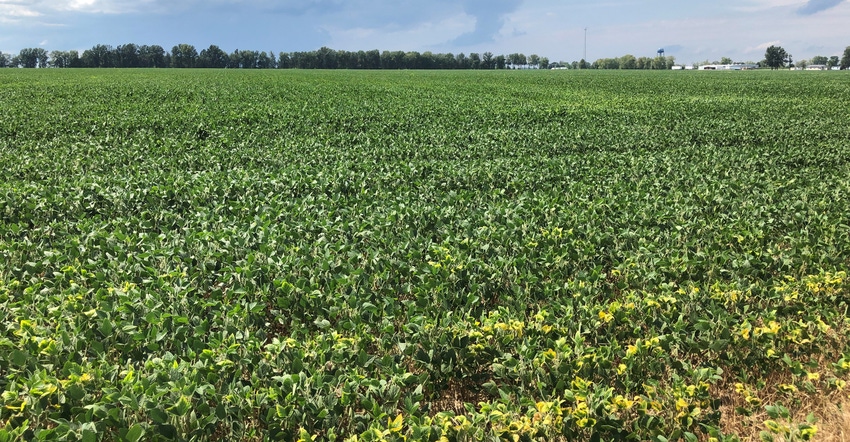October 9, 2019

This scenario may sound familiar. You typically broadcast phosphorus, potassium and lime if needed after harvest. But it turned wet late in 2018. You didn’t get lime and fertilizer applied as you intended. Maybe you or your agronomist didn’t even complete soil sampling.
You were going to apply fertilizer this spring, but we saw the longest planting delay in nearly 40 years. So not all fields got fertilized again. Now it’s fall 2019, and harvest is underway. What do you do now?
One thing is certain. If you’re after top soybean yields in 2020, you can’t afford for pH to get too low, and you can’t afford to let any areas become deficient on P and K.
Maybe you noticed signs of K deficiency in 2019. Symptoms appeared in many late-planted fields, typically along the edges first. Potassium deficiency usually occurs on lower leaves, but these symptoms appeared on upper leaves.
We’ve seen potassium deficiency in soybeans during pod fill before. It doesn’t automatically mean the soil is deficient. What you know is that plants didn’t have enough K to supply leaves and developing beans in pods. It’s possible there was plenty of K in the soil, but roots couldn’t take it up due to soil compaction or other stresses.
The problem is, you don’t know the cause of the deficiency unless you take soil tests. If you saw those symptoms, pull soil samples to make sure there’s enough K in the soil.
Plan for 2020
So where does all this leave you as you think about soybeans in 2020? Address the three major soil fertility issues: pH, P and K. If pH is too low, availability of other nutrients can be affected, and herbicide performance may suffer.
Figure out how to apply P and K if soil tests indicate these nutrients are needed and you haven’t been able to make applications recently. We’ve talked a lot about sulfur, and adding sulfur is improving yields in several locations. However, we can’t yet predict the yield response to sulfur in every location. Yet we know that if P or K levels are low, you should see a yield benefit in 2020 for applying those nutrients.
If it’s another tricky late fall, pulling soil samples could be a concern. Consider sampling fields going to beans after corn as soon after harvest as possible. Some Iowa State University work indicates that K test results may be somewhat lower right after harvest than a few weeks later, after residue breaks down and releases more K.
One option is to go ahead and apply K based on recommendations from the soil test pulled right after harvest. You may be a bit aggressive on K application, but you will know you have enough K for next year’s soybean crop.
Casteel is the Purdue University Extension soybean specialist. He writes from West Lafayette, Ind.
About the Author(s)
You May Also Like




